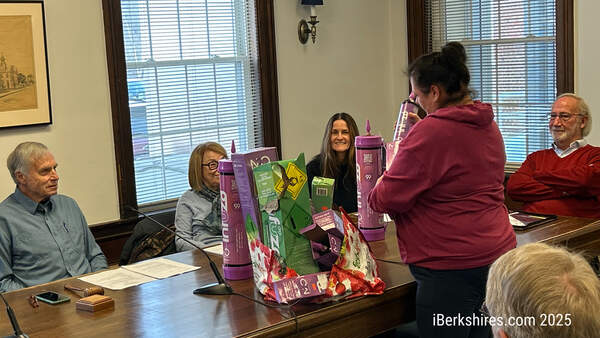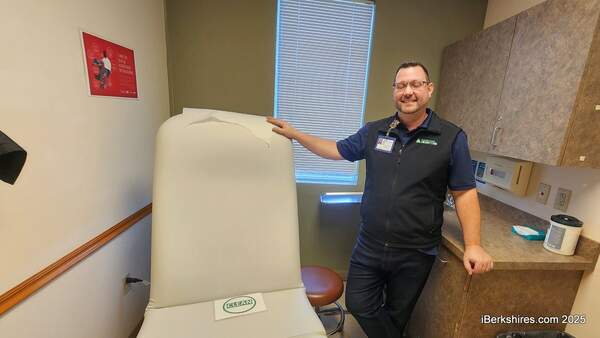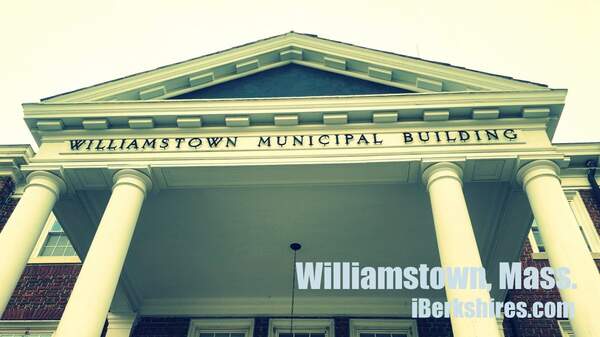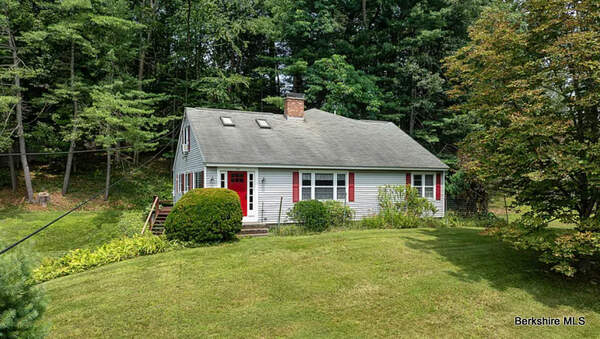Williamstown Planners Pass on Making Lowry Statement
|
The Planning Board could not come to a consensus on how they felt about the future of the Lowry property. |
WILLIAMSTOWN, Mass. — The Planning Board on Tuesday night decided that it could not decide on a unified position on the issue of conveying a portion of the town-owned Lowry property to the Selectmen for purposes of developing affordable housing.
The planners had no specific policy question before them at their regular meeting, but Chairwoman Ann K. McCallum used the meeting to ask her colleagues whether they could form an opinion in advance of Wednesday's televised community conversation.
McCallum is one of the town committee chairs who have been invited by WilliNet, the town's community access television station, to participate in a 7 p.m. panel discussion at Mount Greylock Regional High School.
She brought to Tuesday's meeting a statement she prepared in order to "bounce it off" her committee and see if it could reach a consensus so she could represent the board at Wednesday's event.
"I cannot represent a board that is all over the map," McCallum determined toward the end of a lengthy discussion.
Her original statement, which she read into the record, would have given the community the impression that the Planning Board opposes developing Lowry.
McCallum's statement emphasized that the town instead should be looking at developing brownfield sites like 59 Water St. (the former Town Garage site) and the former PhoTech Mill site on Cole Avenue, both of which are owned by the town.
"On these in-town sites, more houses could be built for the same amount of money," McCallum said in reading her statement. "Members of the Planning Board therefore feel the town can leave the Lowry property as the productive farmland it is."
As it turned out, the members of the Planning Board do not feel that way — not uniformly.
Only four members attended Tuesday's meeting, but one, Richard DeMayo, objected strongly to McCallum's statement as written, and two other two, Elizabeth McGowan and Pat Dunleavy, appeared reluctant to commit the panel to a position on Lowry. Planner D. Chris Winters was out of town.
"There's 10 acres of land [at Lowry]," DeMayo said, referring to a Selectmen-drafted article on April 24's special town meeting warrant. "How many cottages are you going to put on Water Street? And PhoTech has flooded many times. ... And with the pollution in that ground, you're saying you can't put cottages. You have to put multifamily residences, and they can't have gardens.
"I can't go for this as a statement for the Planning Board."
Two members of the town's Affordable Housing Committee addressed the planners from the floor. Chairwoman Catherine Yamamoto emphasized, as she frequently has before several town panels, that her committee is working to develop several different town parcels with the old town garage site at the top of the list and the closest to development.
Lowry does have advantages, Yamamoto and fellow board member Charles Bonenti noted. Unlike 59 Water St. or PhoTech, the green space off Stratton Road has enough land to potentially replicate — on a smaller scale — the kind of community that existed at the Spruces Mobile Home Park.
At one point, McCallum offered Yamamoto some unsolicited advice: that affordable housing advocates stop emphasizing Lowry and giving residents the impression that it is the town's only priority.
Yamamoto objected strenuously to McCallum's premise.
"I hope you don't repeat the things you said because you talk about perception, and I think it's a misperception," Yamamoto said. "We're not solely focused on Lowry. It's not an accurate description of our work. We have been looking at all these sites for years. Lowry, we looked at 20 years ago. It was looked at in the '80s, the '90s."
The difference this time around is that the town has identified Lowry development as a potential use for an estimated $3 million to be available for subsidized housing development from a $6.2 million federal Hazard Mitigation Grant.
Yamamoto argued that the Lowry discussion is premature and lamented the fact that a citizen's petition forced the issue in the form of a special town meeting.
"Those of us working on this for at least 18 months weren't in a position to present something at the May town meeting," she said. "[The special town meeting] is forcing a premature decision-making process."
Dunleavy agreed.
At one point, he argued that the two most contentious issues on that warrant — one to take Lowry out of conservation and another to put it and the town-owned Burbank property in conservation in perpetuity — be tabled.
"I think it's a mistake for the town and a mistake for the Planning Board to recommend to the town that we foreclose on Lowry as an option," he said. "That's as far as I want to go."
Tags: affordable housing, conserved land, lowry property, Planning Board, public forum,

















